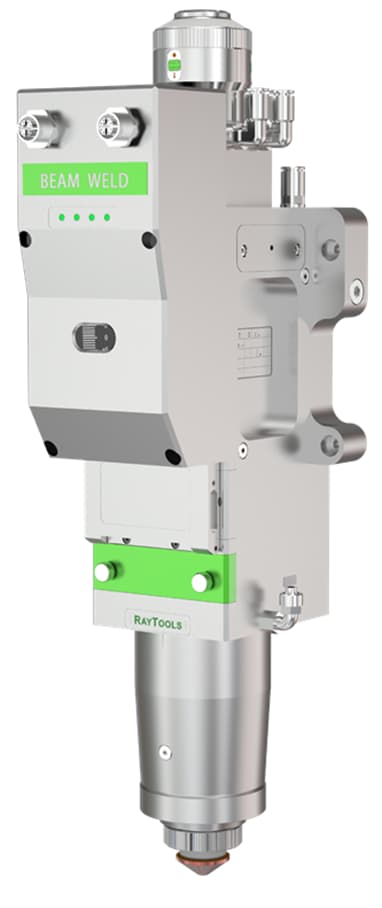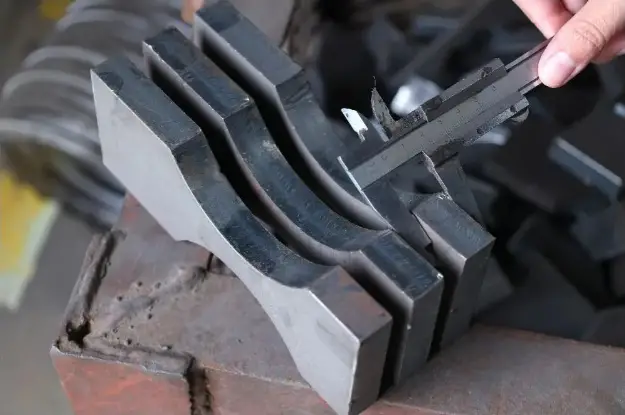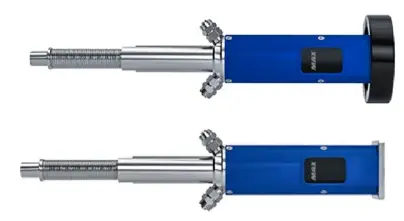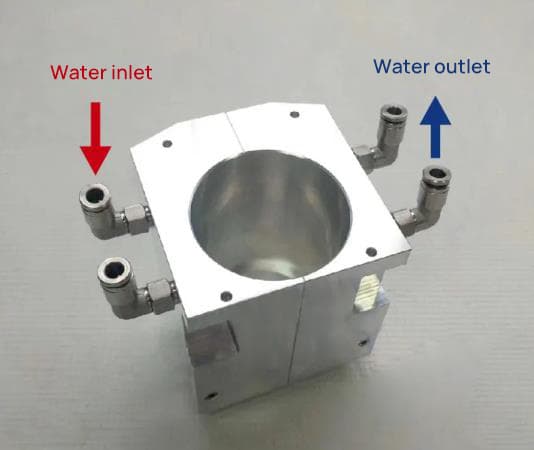The cutting head is a core component of a laser cutting machine, which directly affects the cutting quality of the material and is also one of the important factors driving the development of laser equipment.
During the initial promotion of the 10,000-watt laser, there was no corresponding 10,000-watt cutting head available on the market, making it difficult for end users to use and raising questions about the significance of its practical application. This caused slow progress in promoting the application of 10,000 watt laser.
Furthermore, even if a matching power laser cutting head is available, due to the independent nature of the accessories, each performance indicator may be low or high, resulting in degradation of the overall processing performance, layer by layer, and preventing the equipment reaches its maximum potential.

Therefore, some laser companies have established laser cutting head R&D department, consisting of a research and development team consisting of personnel with more than ten years of experience in laser research and development. Years later, some of them launched the first 10,000 watt laser cutting head, which was matched and optimized with laser parameters.
At the same time, the laser performance and cutting head capacity have been deeply integrated into the system software to fully unleash the potential of the three main components, the laser, the cutting head and the system, to work on the same platform.
This not only solved the problem of waiting for the corresponding cutting head for the laser, but also allowed the laser, cutting head and system to be adapted within Laser's product system, allowing the potential of the laser to be maximized and exhibiting more stable and excellent processing capabilities. .
The three main components are combined with each other and all performance indicators are optimized. The end result is the upper limit of overall performance, which is the lowest common multiple of all indicators.

Laser companies have been deeply involved in the application of 10,000-watt laser cutting for many years, and engineers have accumulated rich experience in the application and techniques of 10,000-watt laser cutting. They also summarized some methods for selecting and using 10,000-watt cutting heads, which can be shared with industry colleagues.
10,000 Watt shaving head model selection
Lens aspect ratio:
The recommended aspect ratio for 10,000-watt cutting head collimation and focusing lenses is 100/200 or a variable-ratio zoom head (since 10,000-watt fiber lasers can cover a wide range of board thicknesses, they require a wide range of focus adjustment).
Connector Type:
Currently, the main types of output heads for 10,000-watt fiber lasers are LOE, Q+, and QD. When choosing a cutting head, it must be consistent with the output head of the 10,000 watt fiber laser.

10,000 Watt shaving head installation and maintenance
Installation environment and requirements
| Environmental requirements | Installation environment and requirements for a cleanroom or cleanbench with level 1000 or higher: | Tool | Magnification of 100 or greater |
| Accessories | No water, alcohol or IPA, cleaning swabs, dust-free cloth, decorative tape, full set of hex wrenches, screwdrivers, utility knives. | ||
| Other requirements | 1. Before installing the kilowatt fiber laser output head on the cutting head, it is necessary to ensure that the inner cavity and lens of the cutting head are clean, as well as the crystal and surrounding area of the cutting head output head. laser;
2. Installation of the kilowatt fiber laser output head on the cutting head and cleaning inspection should be carried out in a dust-free environment above 1000 levels and checked with a microscope with a magnification of more than 100 times. |
||
Installation process
- Ensure the cleanliness of the inside of the shaving head.
- Remove the protective cover from the laser output head.
- Fix the laser output head horizontally and align it with the microscope.
- Clean the outer periphery of the laser output head.
- Adjust the microscope to make the end face of the crystal clearly visible.
- Carefully inspect the entire end face of the crystal and clean off any dirt with a cotton swab dipped in anhydrous alcohol.
- After ensuring that the laser output head crystal is clean, align it horizontally with the cutter head hole.
- Attach the cutting head and seal the connection with decorative tape.
- Install the cutting head on the cutting machine and move it at high speed while checking the lens for dust through the red laser light.
- Only after ensuring that the cutting head is installed correctly can laser cutting be performed.


Maintenance
1. Before using the shaving head, it is recommended to wrap a layer of decorative tape around the shaving head (use residue-free tape) to prevent dust from entering the inside of the shaving head during subsequent maintenance.
2. When there is dirt or damage on the inner lens of the kilowatt cutting head, it is recommended to replace it rather than removing and cleaning it to avoid more serious contamination.
3. In addition to replacing the protective lens under the cutting machine, replacement of the protective lens and collimating lens should be done in a dust-free environment above 1000 levels.
4. To check the cutting head lens, first check whether there are black dots in the red light of the kilowatt fiber laser using white paper, then output the laser at low power and use black photosensitive paper to check whether there are any dots on the point beam. Finally, remove the lens for inspection under a microscope.
Kilowatt cutting head testing process
1. Check whether the follow-up calibration is normal.
2. Check that focus adjustment and monitoring match actual focus.
3. Check whether the actual focus zero is at the 1mm focus position.
4. Check whether the cutting effect is normal for sheets of different thickness and materials.
5. During long-term cutting, ensure that the temperature of the lens and cutting head remains stable, check whether there is thermal lens on the lens, and ensure consistent cutting results.
Cutting head cooling in kilowatts

Cooling Setting:
The diameter of the water pipe outlet from the water cooler to the cutting head should be greater than the diameter of the water cooling interface of the cutting head (Φ8mm), the water flow rate should be ≥4L/min and the water temperature should be 28 ~30°C.
Water flow direction:
Water cooler high temperature water outlet → Kilowatt fiber laser output head → Kilowatt cutting head cavity → Water cooler high temperature water inlet → Kilowatt cutting head bottom cavity.
Cooling plan:
To ensure long-term stable processing and prevent high temperatures in the cutting head from affecting tracking, it is recommended to install a water cooling module, as some brands of cutting heads do not have cooling devices in their lower cavities .

























































